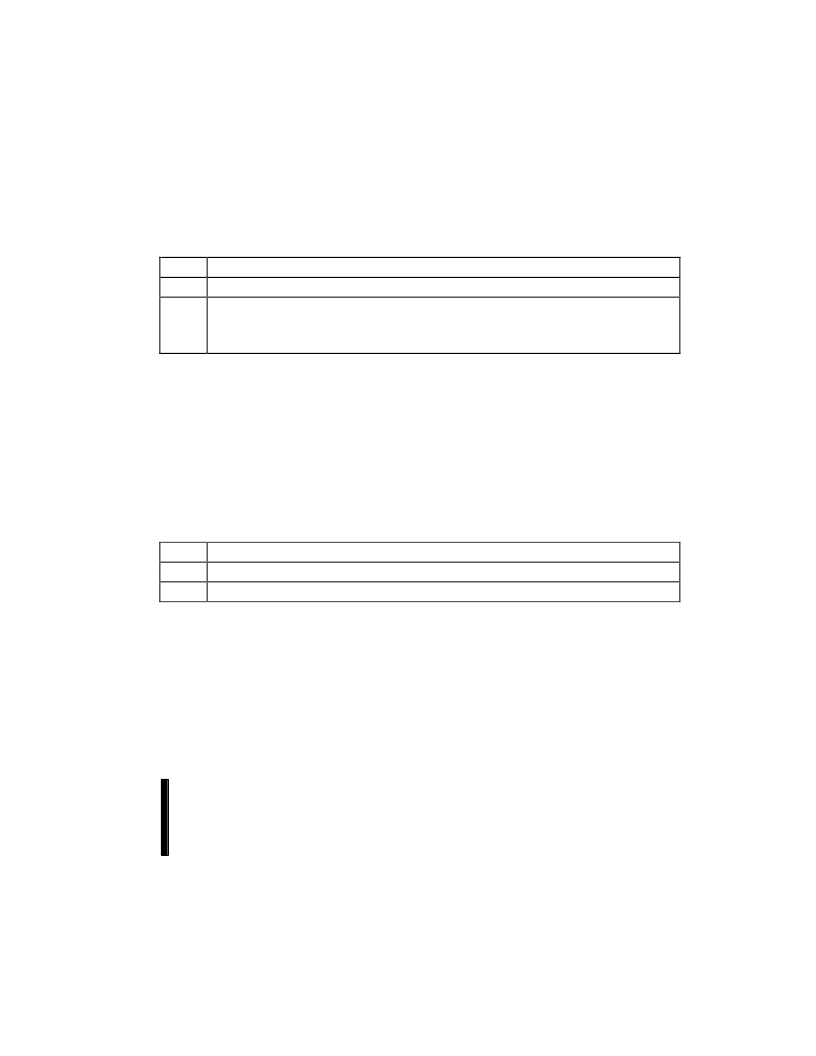- 您現(xiàn)在的位置:買賣IC網(wǎng) > PDF目錄375989 > FW82371 (Intel Corp.) PCI-TO-ISA / IDE XCELERATOR PIIX4 PDF資料下載
參數(shù)資料
| 型號(hào): | FW82371 |
| 廠商: | Intel Corp. |
| 英文描述: | PCI-TO-ISA / IDE XCELERATOR PIIX4 |
| 中文描述: | PCI到的ISA / IDE的XCELERATOR PIIX4 |
| 文件頁(yè)數(shù): | 113/284頁(yè) |
| 文件大小: | 1042K |
| 代理商: | FW82371 |
第1頁(yè)第2頁(yè)第3頁(yè)第4頁(yè)第5頁(yè)第6頁(yè)第7頁(yè)第8頁(yè)第9頁(yè)第10頁(yè)第11頁(yè)第12頁(yè)第13頁(yè)第14頁(yè)第15頁(yè)第16頁(yè)第17頁(yè)第18頁(yè)第19頁(yè)第20頁(yè)第21頁(yè)第22頁(yè)第23頁(yè)第24頁(yè)第25頁(yè)第26頁(yè)第27頁(yè)第28頁(yè)第29頁(yè)第30頁(yè)第31頁(yè)第32頁(yè)第33頁(yè)第34頁(yè)第35頁(yè)第36頁(yè)第37頁(yè)第38頁(yè)第39頁(yè)第40頁(yè)第41頁(yè)第42頁(yè)第43頁(yè)第44頁(yè)第45頁(yè)第46頁(yè)第47頁(yè)第48頁(yè)第49頁(yè)第50頁(yè)第51頁(yè)第52頁(yè)第53頁(yè)第54頁(yè)第55頁(yè)第56頁(yè)第57頁(yè)第58頁(yè)第59頁(yè)第60頁(yè)第61頁(yè)第62頁(yè)第63頁(yè)第64頁(yè)第65頁(yè)第66頁(yè)第67頁(yè)第68頁(yè)第69頁(yè)第70頁(yè)第71頁(yè)第72頁(yè)第73頁(yè)第74頁(yè)第75頁(yè)第76頁(yè)第77頁(yè)第78頁(yè)第79頁(yè)第80頁(yè)第81頁(yè)第82頁(yè)第83頁(yè)第84頁(yè)第85頁(yè)第86頁(yè)第87頁(yè)第88頁(yè)第89頁(yè)第90頁(yè)第91頁(yè)第92頁(yè)第93頁(yè)第94頁(yè)第95頁(yè)第96頁(yè)第97頁(yè)第98頁(yè)第99頁(yè)第100頁(yè)第101頁(yè)第102頁(yè)第103頁(yè)第104頁(yè)第105頁(yè)第106頁(yè)第107頁(yè)第108頁(yè)第109頁(yè)第110頁(yè)第111頁(yè)第112頁(yè)當(dāng)前第113頁(yè)第114頁(yè)第115頁(yè)第116頁(yè)第117頁(yè)第118頁(yè)第119頁(yè)第120頁(yè)第121頁(yè)第122頁(yè)第123頁(yè)第124頁(yè)第125頁(yè)第126頁(yè)第127頁(yè)第128頁(yè)第129頁(yè)第130頁(yè)第131頁(yè)第132頁(yè)第133頁(yè)第134頁(yè)第135頁(yè)第136頁(yè)第137頁(yè)第138頁(yè)第139頁(yè)第140頁(yè)第141頁(yè)第142頁(yè)第143頁(yè)第144頁(yè)第145頁(yè)第146頁(yè)第147頁(yè)第148頁(yè)第149頁(yè)第150頁(yè)第151頁(yè)第152頁(yè)第153頁(yè)第154頁(yè)第155頁(yè)第156頁(yè)第157頁(yè)第158頁(yè)第159頁(yè)第160頁(yè)第161頁(yè)第162頁(yè)第163頁(yè)第164頁(yè)第165頁(yè)第166頁(yè)第167頁(yè)第168頁(yè)第169頁(yè)第170頁(yè)第171頁(yè)第172頁(yè)第173頁(yè)第174頁(yè)第175頁(yè)第176頁(yè)第177頁(yè)第178頁(yè)第179頁(yè)第180頁(yè)第181頁(yè)第182頁(yè)第183頁(yè)第184頁(yè)第185頁(yè)第186頁(yè)第187頁(yè)第188頁(yè)第189頁(yè)第190頁(yè)第191頁(yè)第192頁(yè)第193頁(yè)第194頁(yè)第195頁(yè)第196頁(yè)第197頁(yè)第198頁(yè)第199頁(yè)第200頁(yè)第201頁(yè)第202頁(yè)第203頁(yè)第204頁(yè)第205頁(yè)第206頁(yè)第207頁(yè)第208頁(yè)第209頁(yè)第210頁(yè)第211頁(yè)第212頁(yè)第213頁(yè)第214頁(yè)第215頁(yè)第216頁(yè)第217頁(yè)第218頁(yè)第219頁(yè)第220頁(yè)第221頁(yè)第222頁(yè)第223頁(yè)第224頁(yè)第225頁(yè)第226頁(yè)第227頁(yè)第228頁(yè)第229頁(yè)第230頁(yè)第231頁(yè)第232頁(yè)第233頁(yè)第234頁(yè)第235頁(yè)第236頁(yè)第237頁(yè)第238頁(yè)第239頁(yè)第240頁(yè)第241頁(yè)第242頁(yè)第243頁(yè)第244頁(yè)第245頁(yè)第246頁(yè)第247頁(yè)第248頁(yè)第249頁(yè)第250頁(yè)第251頁(yè)第252頁(yè)第253頁(yè)第254頁(yè)第255頁(yè)第256頁(yè)第257頁(yè)第258頁(yè)第259頁(yè)第260頁(yè)第261頁(yè)第262頁(yè)第263頁(yè)第264頁(yè)第265頁(yè)第266頁(yè)第267頁(yè)第268頁(yè)第269頁(yè)第270頁(yè)第271頁(yè)第272頁(yè)第273頁(yè)第274頁(yè)第275頁(yè)第276頁(yè)第277頁(yè)第278頁(yè)第279頁(yè)第280頁(yè)第281頁(yè)第282頁(yè)第283頁(yè)第284頁(yè)

E
6.2.4.
82371AB (PIIX4)
113
4/9/97 2:23 PM PIIX4aDS
INTEL CONFIDENTIAL
(until publication date)
PRELIMINARY
FRNUM—FRAME NUMBER REGISTER (IO)
I/O Address:
Default Value:
Attribute:
Base + (06
07h)
0000h
Read/Write (Writes must be Word Writes)
Bits [10:0] of this register contain the current frame number which is included in the frame SOF packet. This
register reflects the count value of the internal frame number counter. Bits [9:0] are used to select a particular
entry in the Frame List during schedule execution. This register is updated at the end of each frame time.
This register must be written as a word. Byte writes are not supported. This register cannot be written unless the
Host Controller is in the STOPPED state as indicated by the HCHalted bit (USBSTS register). A write to this
register while the Run/Stop bit is set (USBCMD register) is ignored.
Bit
Description
15:11
Reserved.
10:0
Frame List Current Index/Frame Number.
Bits [10:0] provide the frame number in the SOF Frame.
The value in this register increments at the end of each time frame (approximately every
1 ms). In addition, bits [9:0] are used for the Frame List current index and correspond to memory
address signals [11:2].
6.2.5.
FLBASEADD—FRAME LIST BASE ADDRESS REGISTER (IO)
I/O Address:
Default Value:
Attribute:
Base + (08
0Bh)
Undefined
Read/Write
This 32-bit register contains the beginning address of the Frame List in the system memory. HCD loads this
register prior to starting the schedule execution by the Host Controller. When written, only the upper 20 bits are
used. The lower 12 bits are written as 0 (4-Kbyte alignment). The contents of this register are combined with the
frame number counter to enable the Host Controller to step through the Frame List in sequence. The two least
significant bits are always 00. This requires DWord alignment for all list entries. This configuration supports
1,024 Frame List entries.
Bit
Description
31:12
Base Address.
These bits correspond to memory address signals [31:12], respectively.
11:0
Reserved.
Must be written as 0s.
相關(guān)PDF資料 |
PDF描述 |
|---|---|
| FW82801E | Intel 82801E Communications I/O Controller Hub (C-ICH) |
| FWB150 | 1.5 AMP FAST RECOVERY BRIDGE RECTIFIERS |
| FWB151 | 1.5 AMP FAST RECOVERY BRIDGE RECTIFIERS |
| FWB1510 | 1.5 AMP FAST RECOVERY BRIDGE RECTIFIERS |
| FWB152 | 1.5 AMP FAST RECOVERY BRIDGE RECTIFIERS |
相關(guān)代理商/技術(shù)參數(shù) |
參數(shù)描述 |
|---|---|
| FW82371EB | 制造商:Intel 功能描述:IC INTEL 82371EB 352BGA 制造商:Rochester Electronics LLC 功能描述: |
| FW82371EB S L37M | 制造商:Intel 功能描述:Embedded Processor 352-Pin BGA |
| FW82371EB SL37M | 制造商:Intel 功能描述: |
| FW82371MB | 制造商:Rochester Electronics LLC 功能描述:PCI-ISA BRIDGE, T&R, SPEC SL3CG - Bulk |
| FW82439HX | 制造商:Intel 功能描述: |
發(fā)布緊急采購(gòu),3分鐘左右您將得到回復(fù)。